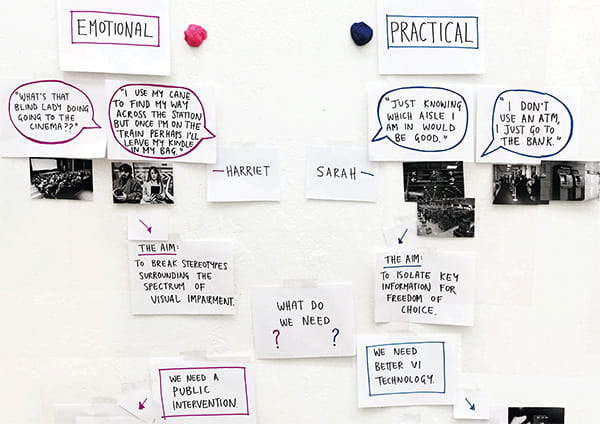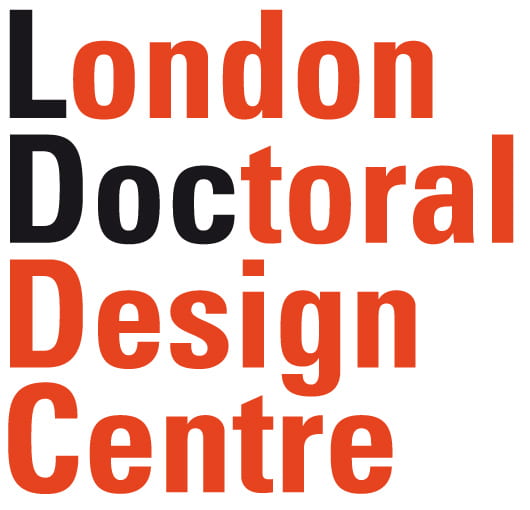
“In these early stages of my research endeavour, I believe that I have learned the most valuable lesson to date, during the Across RCA, People-centred Design Workshop, led by the HHCD – “Design to Improve Life”.
With my assigned cluster of fellow design students, I met Harriet on the first workshop day. Harriet is a person from the VI community and was the instigator of the workshop itself. After listening to her account, we eagerly challenged each other to find practical design solutions for Harriet’s social based issues, such as feeling uncomfortable, when revealing her partially sightedness in public. While taking her white cane to the cinema for instance or when using her cane to find her way across the train station, but then attempting to read her Kindle once seated inside the carriage. The group quickly concurred that stereotypes surrounding the spectrum of visual impairment must be broken. To achieve this a public intervention was needed. Wonderful! A notion of satisfaction and achievement beset us. This lasted until we met Sarah. Sarah was assigned to our group from one of five VI participants who accompanied the workshop process throughout the week. Sara had a very different problem than Harriet. She was frustrated with how she would always receive too much audio information when guided through her everyday life. She wanted to find VI friendly stores with trained assistants. “Just knowing which aisle I’m in would be good.”
This conundrum of two unrelated problems to be solved within one spectrum, clarified an important assumption about user-centred design for me. As Rama Gheerawo puts it, there is always “the rule of the one”. People have their individual concerns, even if they belong to the same user group. Therefore the individual must be heard, each singular problem must be assessed and evaluated. There might not be one universal solution. Secondly, I realised how messy interviews could become, while being rather fruitful at the same time. Sarah liked to chat! A lot! She wanted to interact and participate in the design process but also talk about her stylish jacket or literature and her new iPhone. We were overwhelmed with her joyfully unstructured input. It was only when we gave up our protocol and just listened to her, did we encounter the depth of her true concerns.”
